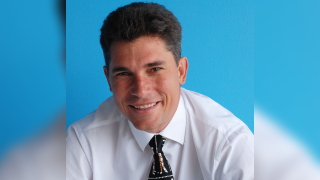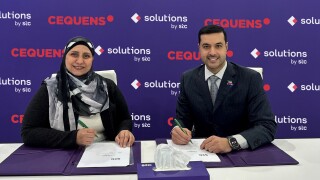
The PEACE cable system, which connects Asia, Africa and Europe, and is targeted for completion in 2022, seeks to provide open, flexible and carrier-neutral services for customers across a broad range of countries. With the Mediterranean segment of the network ready to go live, Sun Xiaohua, COO at PEACE Cable, gives the low-down on the latest developments.
Taking into account the impact of Covid-19 on business, how has PEACE responded to continue rolling out its cable system?
We are delighted to announce that PEACE has now entered the final sprint for full delivery and will be put into commercial use soon this year. The planning of the PEACE project started in 2018 and the cable system has successively landed in Pakistan, Cyprus, Egypt, France, Malta, Seychelles and Kenya. Now, the Mediterranean segment of PEACE – known as PEACE-MED – is ready for service, and the overall project will also be completed in the next few months, bringing high-quality services to customers.
Looking back on the whole process, the impact of Covid-19 has brought plenty of challenges in rolling out our project. Epidemic prevention and lockdown measures, as well as health-related reductions in productivity among personnel, and many other factors have added practical risk points to the construction process.
Nonetheless, the results so far show that we have already overcome these difficulties to achieve today’s progress. This is due to the joint efforts of the entire team, including the help and support of our close partners all over the world. Despite the many inconveniences caused by Covid, we have maintained teamwork and online cooperation, and kept close contact to address the challenges encountered together, leading to the completion of PEACE’s milestones one after another.
What advantages does the PEACE cable system have over competing cable networks in the region?
As an international submarine cable connecting Asia, Africa and Europe, with independent investment, design and operation, PEACE currently has a length of 15,000km under construction, with a total planned length of over 25,000km. It will ultimately land in more than 20 countries, with the network passing over 30 countries in total. It will provide a new route and reduce latency in data transmission between regions.
PEACE breaks away from the traditional way of operating as a large project alliance, adopting the model of an individual project company for investment to help make it more flexible and efficient. It also introduces the technical elements of an open-cable model and is committed to providing neutral, flexible and non-differentiated interconnection services for various operators, OTTs and enterprises across the regions where it operates to meet the diversified needs of customers.
The whole system will follow a platform-based management method, with centralised network management and unified scheduling – thus enabling agile and efficient deployment to help achieve autonomous and customisable conditions for network construction among customers. We will also support customised cooperation solutions to provide more flexible business models.
In terms of technology, we have adopted advanced ROADM capabilities powered by WSS [wavelength selective switches] and a flexible-grid system, providing 200Gbps per single wavelength and a maximum capacity for the system of up to 192Tbps.
The construction of the PEACE cable system will be completed this year, becoming the earliest new-build submarine cable announced in the past few years that links Asia, Africa and Europe to be delivered. Over the next two to three years, PEACE will be able to provide international bandwidth services to countries ranging across those regions, meeting the growing demand for bandwidth from countries where the cable lands and along the route.
How did Telkom Kenya cooperate with PEACE to help complete the cable’s recent landing in Kenya?
PEACE successfully landed in Mombasa, Kenya, at the end of March. As PEACE’s landing partner in the country, Telkom Kenya has supported the cable’s landing and access services with its professional and efficient performance.
In addition to the landing partnership, PEACE Cable and Telkom Kenya will continue to expand their mutual collaboration into the commercial area. Such cooperation will create more business opportunities, contributing to the digital development of Kenya and bringing more economic value to the region.
PEACE will provide new routing options for international traffic between Africa and Europe. It will bring more diverse digital connectivity and provide high-speed, high-capacity, stable and secure data access opportunities to Kenya and the African region in general.
Why is a cable like PEACE needed to meet today’s data and connectivity demands, and how will it evolve to meet changing needs?
At present, more and more cables are entering their renewal cycle, with the requirement for submarine cables also cyclically increasing. Moreover, with the market for video traffic gaining momentum, as well as the commercialisation of 5G in countries around the world and the growing trend towards global data-centre interconnection, many international OTT companies have increasing requirements when it comes to network transmission rates and connectivity. All of these factors will lead to increased demand for international submarine cable bandwidth.
The PEACE cable system is currently designed with a total capacity of 192Tbps and has been created from the outset to be neutral and open, allowing us to provide technical expansion of the overall system for future capacity growth.
In addition, when new technologies enter the market, PEACE can be upgraded with any such technologies offered by suppliers, making the upgrade process more flexible than with a consortium-based cable system.
On top of that, a number of branches have been reserved for possible future extension during the construction phase, and the WSS technology in the branch units will enable future modifications to the system as requirements change, with the ability to expand capacity and providing the option to extend to further potential landing points.
In the lead-up to the full PEACE cable system going live, what are your strategic priorities looking ahead and how will the focus change after the system goes into service?
Faced with the imminent launch of the whole system, PEACE’s future strategic focus will shift from planning and construction before RFS [ready for service] to ensuring high-quality operation and maintenance. Our NOC [network operation centre] team will provide 24/7 monitoring and support to ensure the stable operation of the whole system, so as to bring stable and high-quality services to customers.
The building of PEACE’s NOC platform was completed in July 2021, with commissioning and testing work ongoing, and it is now able to meet all the needs for operation. PEACE manages its own NOC and provides its own operation and maintenance services, breaking away from the traditional service model, providing a future-oriented guarantee system for network operation services, and enabling new products for PEACE operation and maintenance services.
After the system goes live, we will use the NOC platform as the basis for system operation and overlay operational support capabilities to create a globally integrated, end-to-end and business-related management platform. This will support the whole management of processes for fault handling, opening new business, orders and customer services to establish a core technical support platform that integrates construction, maintenance and operation. This will aid rapid network response and facilitate an interconnected operating environment.
What is PEACE’s roadmap into the future?
The overall total planned length of PEACE’s future routes is in excess of 25,000km. In future, PEACE will further extend to South Africa, forming a more comprehensive international network covering Asia-Pacific, Africa and Europe, and offering further business potential for customers. And we also plan to extend to Singapore, which will provide a direct route from Singapore to France, with a branch connection to the Maldives.
Moreover, PEACE envisages future routes to connect to China via Pakistan and Singapore, thus ultimately linking China to Europe and Africa, and enhancing international bandwidth access from East Africa to Europe and Asia.








